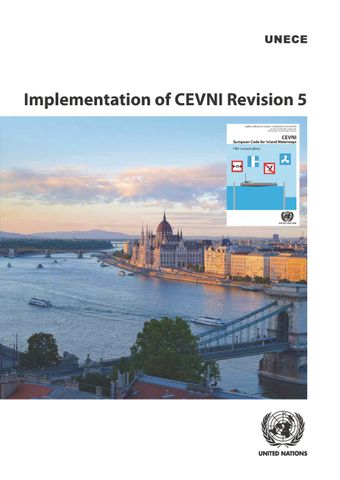Implementation of CEVNI Revision 5

The European Code for Inland Waterways (CEVNI) was first established in 1962 and has since that time been maintained by the UNECE Working Party on Inland Water Transport (SC.3). It contains the core uniform rules applicable to the traffic on inland waterways, such as marking on vessels, visual signs on vessels, sound signals and radiotelephony, waterway signs and markings, rules of the road, berthing rules, signalling and reporting requirements, and prevention of pollution of water and disposal of waste. The provisions of CEVNI are traditionally based on the relevant regulations of river commissions for the Danube, Moselle, Rhine and Sava and adjusted to the pan-European scope of the code. The fifth revised edition of CEVNI (CEVNI 5) is the most harmonized version of the document, and brings together the best practices from the existing traffic regulations of River Commissions and ECE member States. Implementation of the European Code for Inland Waterways” held at the sixty-first session of SC.3, emphasised that the main practical value of unified navigation rules for inland waterways was ensuring harmonized standards for navigation safety. Other values were the unification of vessel documentation and procedures, the contribution to national and regional regulations which prevent accidents on inland waterways, and the common standards for the education and competencies of crews. The majority agreed that, in order to make CEVNI more viable, it should have the status of an international agreement. Such an agreement could also take into account the specific requirements of a particular river section or a river basin. To ensure the necessary transparency, whether CEVNI becomes an international agreement or not, a depository is needed to keep track of the implementation of CEVNI, and of all deviations from CEVNI as well as additional requirements in river basin/regional/national regulations. Ideally, this could be achieved by elevating the status of CEVNI to an international agreement representing a blueprint regulation which is accessible for River Commissions and national governments to amend the rules according to regional, national and local needs.


